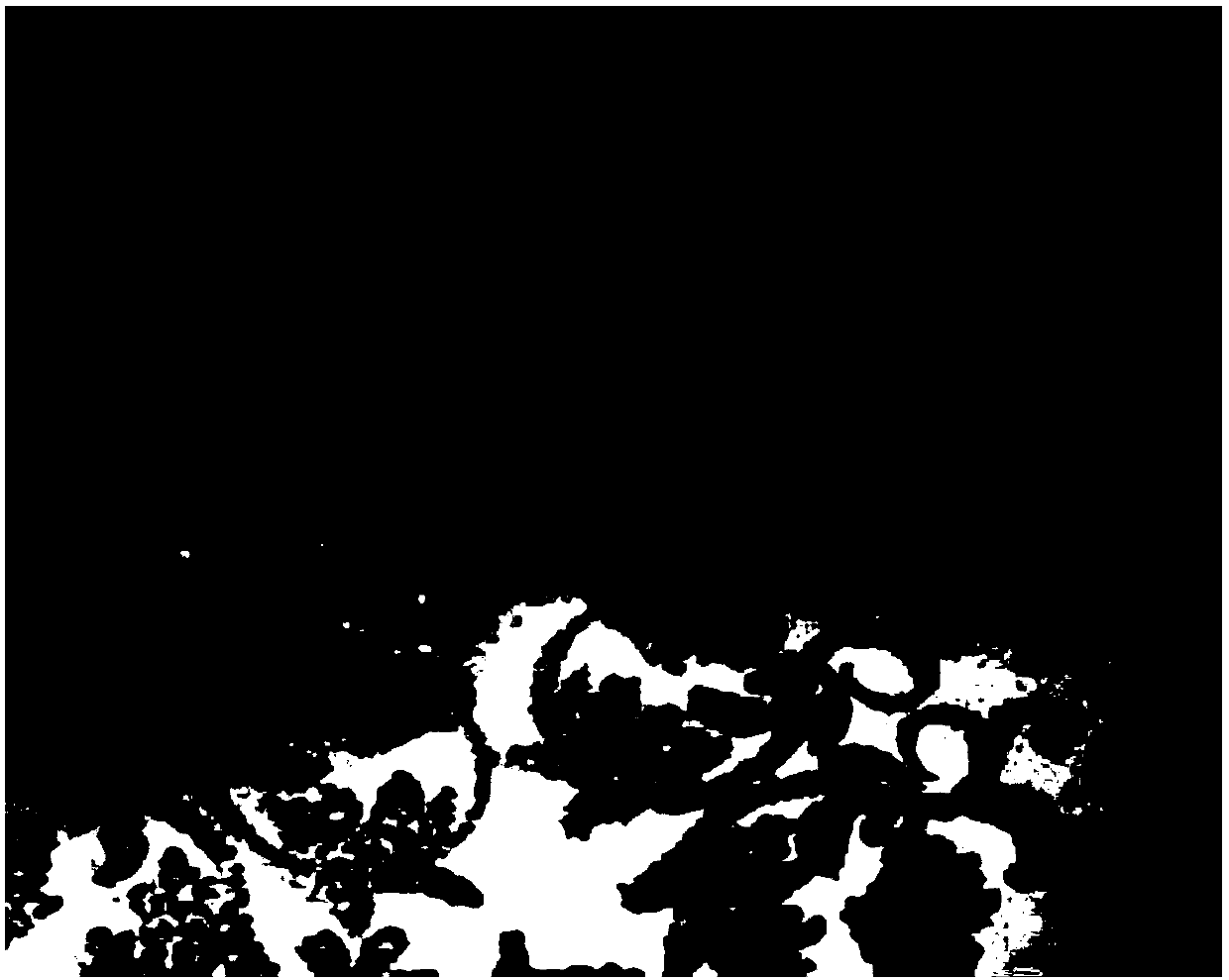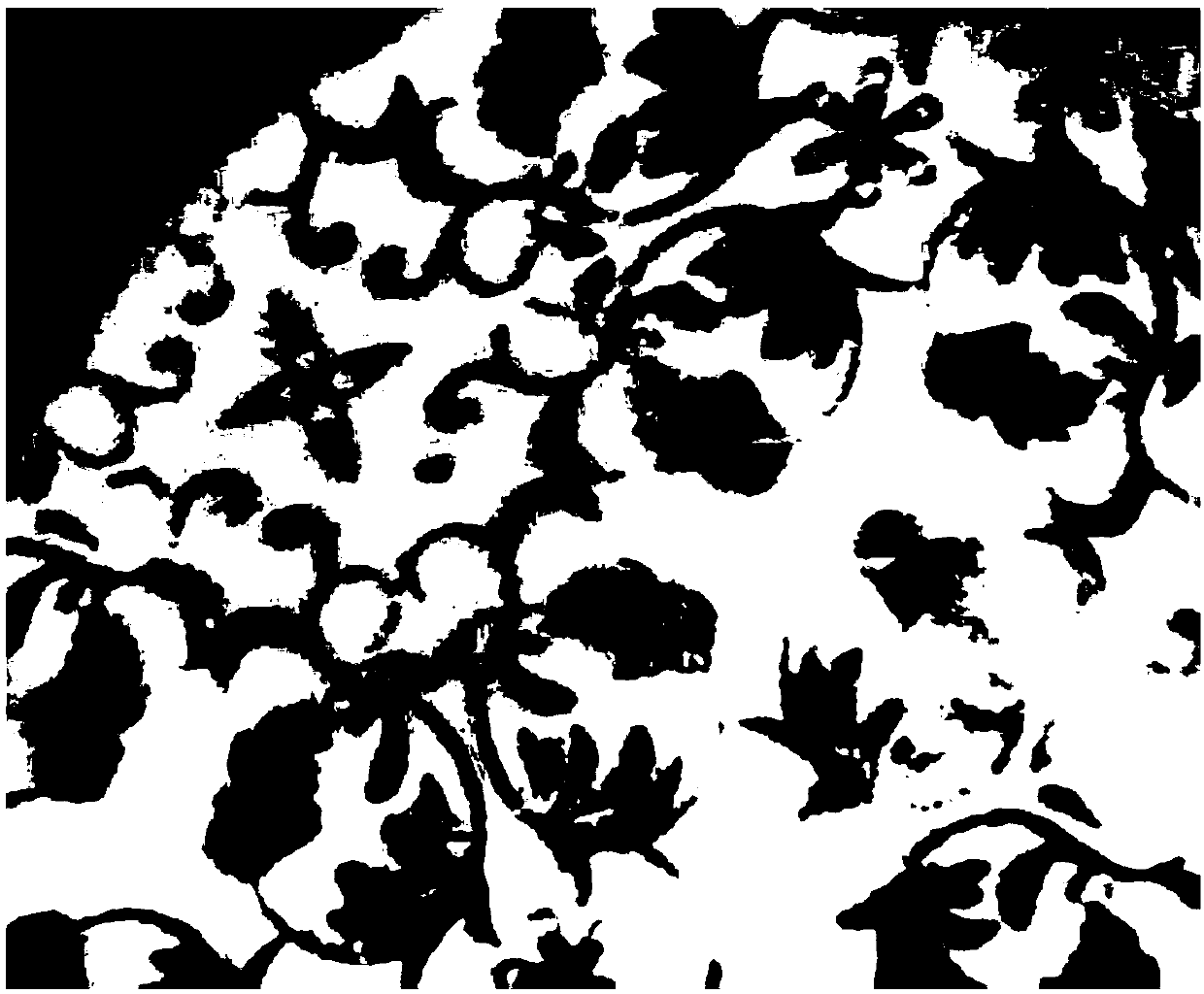Daily-used porcelain silicone printing oil, daily-used porcelain silicone printing ink and methods for preparing daily-used porcelain silicone printing oil and daily-used porcelain silicone printing ink
A silicone ink, a daily-use technology, applied in the field of ceramics, can solve problems such as weak adhesion, poor suspension, easy to be damaged or fall off, etc., to achieve suitable hydrophilic and lipophilic properties, strong flexibility, and printing stability high effect
- Summary
- Abstract
- Description
- Claims
- Application Information
AI Technical Summary
Problems solved by technology
Method used
Image
Examples
Embodiment 1
[0048] (1) Take 11 parts by weight of sodium carboxymethylcellulose (D.S=0.6-0.8), 5 parts by weight of propylene glycol, 0.5 parts by weight of hydroxyl-terminated polydimethylsiloxane (viscosity 250-500cps), and 83 parts by weight of deionized water. parts by weight, heated to 80°C, stirred and mixed until completely dissolved; then added 1 part by weight of sodium tripolyphosphate, 20 parts by weight of Tween, 0.05 parts by weight of polyoxyethylene polyoxypropanolamine ether, methyl p-hydroxybenzoate 0.25 parts by weight of the ester, stirred and mixed evenly to obtain printing oil.
[0049] (2) Take 45 parts by weight of dark blue zirconia (D50=5 μm) and 55 parts by weight of printing oil prepared in step (1), and mix them in a ball mill for 10 minutes to obtain printing ink. The measured viscosity is 3500-4000cps / 10min, wherein the viscometer used is a digital display viscometer, the rotor used is No. 2 rotor, and the measuring volume is 100mL. Placed for 72h to observe...
Embodiment 2
[0052] (1) Take 15 parts by weight of sodium carboxymethylcellulose (D.S=0.6-0.8), 10 parts by weight of propylene glycol, 1 part by weight of hydroxyl-terminated polydimethylsiloxane (viscosity 250-500cps), 86 parts by weight of deionized water parts by weight, heated to 80°C, stirred and mixed until completely dissolved; then added 2 parts by weight of sodium tripolyphosphate, 20 parts by weight of Tween 5, 0.05 parts by weight of polyoxyethylene polyoxypropanolamine ether, methyl p-hydroxybenzoate 0.25 parts by weight of the ester, stirred and mixed evenly to obtain printing oil.
[0053] (2) Take 45 parts by weight of dark blue zirconia (D50=5 μm) and 55 parts by weight of printing oil prepared in step (1), and mix them in a ball mill for 10 minutes to obtain printing ink. The measured viscosity of the ink is 4000-4500cps / 10min, wherein the viscometer used is a digital display viscometer, the rotor used is No. 2 rotor, and the measurement volume is 100mL. Placed for 72h t...
Embodiment 3
[0056] (1) Take 15 parts by weight of sodium alginate (industrial grade), 10 parts by weight of glycerol, 1 part by weight of castor oil, and 83 parts by weight of deionized water, heat to 80 ° C, stir and mix until completely dissolved; then add polyacrylic acid 2 parts by weight of ammonium, 80 parts by weight of Tween 5, 0.05 parts by weight of polyoxyethylene polyoxypropanolamine ether, and 0.25 parts by weight of methyl p-hydroxybenzoate, stirred and mixed evenly to obtain printing oil.
[0057] (2) Take 45 parts by weight of dark blue zirconia (D50=5 μm) and 55 parts by weight of printing oil prepared in step (1), and mix them in a ball mill for 10 minutes to obtain printing ink. The measured viscosity of the ink is 4000-4500cps / 10min, wherein the viscometer used is a digital display viscometer, the rotor used is No. 2 rotor, and the measurement volume is 100mL. Placed for 72h to observe no delamination.
[0058] (3) First apply the printing ink evenly on the steel temp...
PUM
| Property | Measurement | Unit |
|---|---|---|
| particle size | aaaaa | aaaaa |
Abstract
Description
Claims
Application Information
 Login to View More
Login to View More - R&D
- Intellectual Property
- Life Sciences
- Materials
- Tech Scout
- Unparalleled Data Quality
- Higher Quality Content
- 60% Fewer Hallucinations
Browse by: Latest US Patents, China's latest patents, Technical Efficacy Thesaurus, Application Domain, Technology Topic, Popular Technical Reports.
© 2025 PatSnap. All rights reserved.Legal|Privacy policy|Modern Slavery Act Transparency Statement|Sitemap|About US| Contact US: help@patsnap.com



